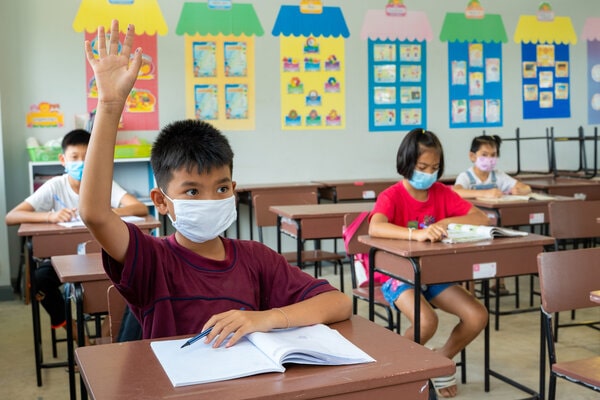Returning to school has taken on new meaning and a new set of worries for parents and other caregivers. Schools must now balance the educational, social, and emotional needs of their students along with the health and safety of students and staff in the midst of the evolving COVID-19 pandemic. While most of the countries allowed the graded reopening of schools, we are here with 5 safety tips for your kids for returning to school during Covid.
Practice safe distancing
Social distancing, or physical distancing, is the practice of allowing enough space between individuals to reduce the spread of disease. During theCOVID-19pandemic, the US Centers for Disease Control and Prevention (CDC) and World Health Organization (WHO) recommend keeping at least 6 feet (2 meters) of space between yourself and people outside your household to meet these goals.
But that might not be practical in some schools or with younger children. The American Academy of Pediatrics (AAP) says following strict physical distancing can conflict with ideal academic, social and emotional learning standards. It’s also not clear how easilyCOVID-19spreads among children.
Wear mask and gloves
The first step to fighting the Coronavirus disease is to stop the transfer of the virus from one infected person to another, and it is possible if everyone who is out in public wears masks and gloves. Wearing masks and gloves will protect the students, staff, and teachers from contracting the disease as and when they communicate in classroom gatherings or on other occasions.
Keep hands clean
Practice hand-washing at home with your child and explain why it’s important to wash his or her hands with soap and water for at least 20 seconds, especially before and after eating, coughing/sneezing, or adjusting a face mask. To prevent rushing, suggest washing hands for as long as it takes to sing the “Happy Birthday” song twice. When hand-washing isn’t available, suggest that your child use an alcohol-based hand sanitizer that contains at least 60% alcohol. Also, explain that he or she should avoid touching his or her eyes, nose, and mouth.
Schools should encourage routines that encourage frequent hand-washing and following good hand hygiene practices, such as asking children to cover their mouths and noses with their elbows or tissues when they cough or sneeze and then washing their hands.
Vitamins and minerals consumption
The school authorities will take steps to educate and counsel both parents and students on the benefits of consuming vitamins and minerals such as Vitamin C, Zinc, Vitamin B, Vitamin D, and other supplements, as suggested by the World Health Organization, every morning to boost immunity, as the students step out of their safe zones.
Stay home if sick
You should monitor your child each day for signs ofCOVID-19. These include:
- Fever
- Nasal congestion or runny nose
- Cough
- Sore throat
- Shortness of breath
- Fatigue
- Headache
- Muscle aches
- Nausea or vomiting
- Diarrhea
- Poor appetite
- New loss of taste or smell
- Belly pain
- Pink eye
Some schools may recommend daily temperature readings as a part ofCOVID-19symptom screening. But since many of these symptoms overlap with other conditions, such as the common cold, allergies and influenza, the effectiveness of this screening can be limited. To limit the spread ofCOVID-19as well as other germs, children should stay home from school and other activities if they have any signs of illness or a fever. Contact your doctor if you have questions.












